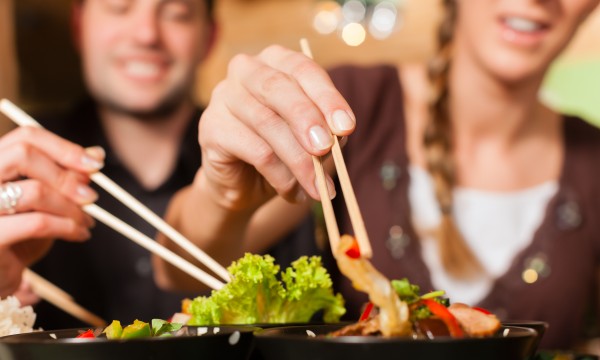Eating healthy, a crucial habit when you have diabetes, can be tricky when dining out. Here are 10 tips, especially curated for when dinner or lunch is at a Chinese restaurant.
- Browse Categories
- All Tips
-
Home & Garden
- All
- Appliances
- Bathroom
- Cleaning
- Crafts
- Decorating
- Electrical
- Flooring
- Furniture
- Garage Door
- Gardening
- Green Living
- Heating
- Home Alarm Systems
- Home Maintenance
- Home Remedies
- Home Security
- Home Staging
- House Sitting
- Junk Removal
- Kitchen
- Lawn Care
- Lock Systems
- Moving
- Outdoor Living
- Pest Control
- Plumbing
- Renovation
- Roofing
- Snow Removal
- Storage
- Tools
- Tree Service
- Health
- Family
- Travel
- Auto
- More Tips

10 ways to eat healthy at a Chinese restaurant
June 30, 2015

1. Fill your teacup
- Whether the restaurant serves green or black tea, have some.
Tea is one of nature's most powerful sources of antioxidants, and these free-radical scavengers help protect the body from the ravages of blood sugar, such as artery and nerve damage.
Best of all, tea is calorie-free.
2. Eat with chopsticks
It's easy to shovel big mouthfuls of food in with a fork.
- With chopsticks, each piece has to be picked up carefully and delivered safely into your mouth.
- Because of the skill and pace involved, odds are you'll eat more slowly with chopsticks than you will with a fork. And when you eat with chopsticks, you're more likely to leave some of the fatty sauce behind on the plate.
3. Avoid sweet-and-sour sauces
These sauces, which often come with lemon chicken or crispy orange beef, spell double trouble for the Chinese restaurant diner.
- Not only are they high in sugar, but they also traditionally coat meats that have been battered and deep fried.
4. Order garlic or brown sauce
- These contain less sugar than sweet-and-sour sauces, and they often come with sautéed meat and vegetable dishes.
They're typically sky-high in sodium, though, so ask for them on the side and use sparingly.
5. Limit your rice intake
- Let the others at the table help themselves to rice while you focus on the vegetables and protein in the meal.
One-third cup of rice raises your blood sugar at the same rate as one slice of bread. You probably wouldn't think of eating six slices of bread during dinner, but you can easily load up on rice.
- Stick to 50 grams (1⁄3 cup), and choose brown over white for extra fibre.
6. Order entrées with veggies
- Try spinach with garlic, beef and broccoli or chicken with mixed vegetables.
Avoid eggplant, which soaks up oil like a sponge. One dish of eggplant in garlic sauce can contain an mind-numbing 1,000 calories.
7. Split entrées with a friend
- If you're dining with a friend, order one vegetable dish and one other entrée to split.
These dishes will give you more vegetables and more variety.
8. Order steamed dumplings or spring rolls
Pick these choices over egg rolls.
- The dumplings are about a reasonable 80 calories each (limit yourself to one or two), and spring rolls (which are similar to egg rolls, except that they're steamed instead of deep fried) are only about 100 calories each (limit yourself to one).
- They're both better choices than egg rolls, which have about 200 calories and six grams of saturated fat each.
9. Watch out for sauces
Because your meal likely already contains a day's worth of sodium or more, resist the temptation to add the duck, hot mustard, hoisin and soy sauces the restaurant provides.
10. Keep your rice in its bowl
The surest path to maximum calorie intake is to scoop white rice onto your plate and dump your sauce-laden entrée on top. The rice will soak up the sauce, which will make you want to eat every last bite of it.
- Instead, keep your rice in your rice bowl, and your meat and vegetables in the bowl it came in.
- Using your chopsticks to first pick up a slice of meat, and then perhaps a few grains of rice from the other bowl, accomplishes two things: the fatty sauce is left behind, and you eat less rice.






